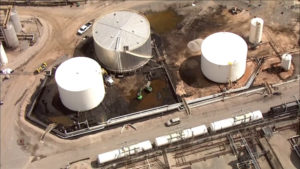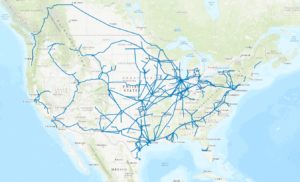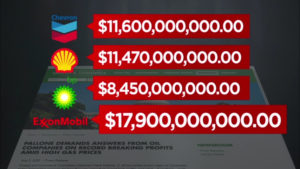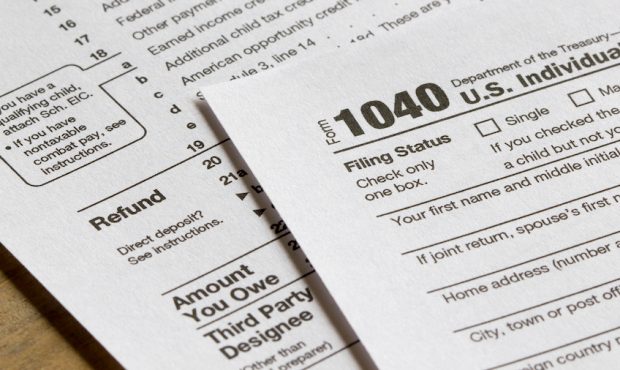GET GEPHARDT
Get Gephardt: No, really, why are Utah gas prices still higher than the national average?
Sep 22, 2022, 8:16 PM | Updated: Oct 13, 2022, 12:42 pm
NORTH SALT LAKE, Utah — It’s the most common question KSL receives from viewers: Why are gas prices in Utah so much higher than in other parts of the country?
The questions aren’t without reason. While the rest of the country has seen a drastic reprieve in gas prices, Utah lags significantly behind.
According to AAA, the national average for a gallon of gas sits at $3.681. Utah’s paying about 60 cents more, averaging $4.229 per gallon.
“It’ll come around,” said Ken Boyle, a St. George resident. “We’ll catch up eventually.”
Waiting for Utah gas prices to drop comes with a certain frustration.
“What is it?” questioned Boyle, “Is it price gouging? Why are we so slow?” It’s a sentiment heard in dozens of emails, calls and social media posts to KSL Investigators. Some point to “all the major refineries in the Salt Lake Valley,” suggesting our gas production capabilities shouldn’t be holding us back from sliding prices.
A picture of Utah’s oil production
Utah does have a robust oil production industry. According to data from the U.S. Energy Information Association, Utah ranked 10th in the nation for oil production in 2020.
Utah’s five oil refineries process about 204,000 barrels per day, more than enough to cover the 121,000 barrels Utahns consume daily. Most of the gasoline consumed in Utah is created from Utah refineries.
Utah produces so much gasoline, we found the refineries boast of supplying gasoline to several western states, including Idaho, Nevada, Wyoming, Washington, and Oregon.
Utah also has oil pipelines—three major ones spanning over a thousand miles. They bring refined gas products from the Sinclair refinery in Wyoming to the Wasatch Front and carry refined product from the North Salt Lake refineries to other states like Idaho and Nevada.
The Utah Petroleum Association said most of the motor fuel Utahns use is produced from those North Salt Lake refineries.
It’s not really a lot of gas produced
Looking at the numbers, it seems like a no-brainer that Utah would be self-sufficient in gasoline, and therefore have lower prices.
It’s not that simple.
Get Gephardt spoke with Tom Holst, senior energy analyst at the Kem Gardner Policy Institute. Holst worked in the oil industry for decades all over the world. He said while it seems like Utah produces a lot, we really don’t.
“In the Gulf Coast, they collectively process 5 million barrels per day,” explained Holst.
That’s 25 times more than Utah.
The Gulf Coast’s massive supply, when compared to Utah and how many states it supplies, is one reason we pay more for gas.
Free market at work
Holst says there are other contributing factors: state gas taxes in Utah are 31.9 cents per gallon, slightly higher than the national average of 28.85 cents per gallon. We have fewer pipelines, which means more expensive trucks are used to deliver both crude oil and refined products to end users.
And yes, politics and profits can also factor in.
In a free market system, oil companies are free to sell to whoever will pay the highest price.
“The refiners in North Salt Lake have made significant investments and their refined products will seek the highest price that it can,” said Holst.
Despite many hurdles the industry is facing—like labor shortages, sanctions on Russian products, and fewer oil leases available for purchase – oil companies are recording record profits.
According to the U.S. House Committee on Energy and Commerce, Chevron reported profits of $11.6 billion last quarter. Shell came in with $11.47 billion. BP earned $8.45 billion, and Exxon reported profits of $17.9 billion — the highest quarterly profit reported by any oil company in history.
Utah Petroleum Association defended the free market economics of oil companies, pointing out that only “2.4%” of those profits go to the companies’ ‘corporate officers.’” This equates to $429.6 million in the case of Exxon.
Through a “Utah Gas Prices Explainer” flyer, UPA said most of those profits go to “millions of Americans — through retirement funds like 401(K)s, and private and public pension funds.” These are paid out to stockholders through dividends on their shares.
UPA pointed out “refiners own less than 5% of the 145,000 retail stations across the country.” A spokesperson told Get Gephardt, “UPA does not represent retail gas stations and that’s where the rubber meets the road here.”
So we went to Dave Davis, president of the Utah Food Industry Association which does represent retail gas stations, to find out: Is the gouging happening at the actual gas pump?
Davis indicated it’s likely not the retailers causing pain at the pump.
“At a retail level, we’re not seeing a significant increase in the gross margin on fuel,” Davis explained.
Turning to alternative fuels
Though pain at the pump continues, Holst was optimistic that good things will emerge, specifically that Utahns will become less reliant on oil and gasoline for transportation.
“Electronic vehicles are becoming mainstream,” said Holst. “The EV adoption rate by Utahns is higher than the national average.”
He’s right. The U.S. Department of Energy showed 16,480 electric vehicles registered to Utahns at the end of 2021, or five per every 1,000 people. The national average for EV adoption is three per 1,000 people.
Utah’s gas prices have fallen $1.041 per gallon since the all-time average high of $5.262 on July 1, 2022. While prices continue to fall here, national prices have started to rise again due to fluctuating prices on crude oil.
Demands on gasoline supply as we head into the winter months will play a big role in determining if Utah gas prices remain on a downward trend.
Have you experienced something you think just isn’t right? The KSL Investigators want to help. Submit your tip at investigates@ksl.com or 385-707-6153 so we can get working for you.















